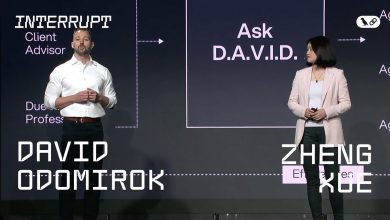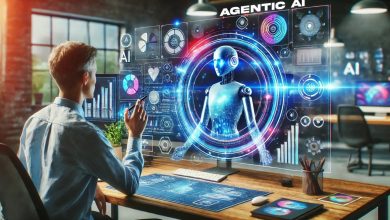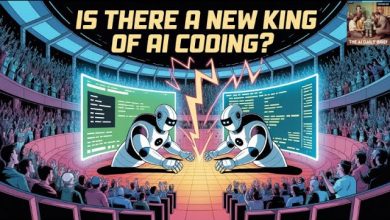AI as a Team Member – The Future of Collaborative Work
 In this episode of The Q&AI Podcast, Juniper’s Bob Friday sits down with Mitch Davis, CIO of Dartmouth College, to discuss the art of building high-performance teams.
In this episode of The Q&AI Podcast, Juniper’s Bob Friday sits down with Mitch Davis, CIO of Dartmouth College, to discuss the art of building high-performance teams.
Mitch shares his strategies for breaking down silos, fostering collaboration, inspiring innovation, and creating a culture of trust and success.
Whether you’re in tech or any field that values effective teams, this conversation is packed with actionable insights and transformative ideas.
The Evolution of AI: From Tool to Teammate
In the rapidly evolving landscape of modern work, artificial intelligence (AI) is no longer just a tool—it’s becoming a vital team member. From brainstorming sessions to project management, AI is transforming how we collaborate, innovate, and achieve our goals.
This shift isn’t about replacing humans but about augmenting our capabilities, enabling teams to work smarter, faster, and more creatively. As we stand on the cusp of a new era, let’s explore how AI is redefining collaborative work and why embracing it as a teammate is the key to unlocking unprecedented productivity and innovation.
Historically, AI was confined to repetitive tasks—crunching numbers, automating processes, or analyzing data. Today, advanced AI systems, like those developed by xAI, are capable of much more. They can generate ideas, provide real-time insights, and even engage in nuanced conversations. Unlike traditional tools, AI can learn, adapt, and contribute dynamically to team objectives. This evolution marks a paradigm shift: AI is no longer just a resource; it’s a collaborative partner that brings unique strengths to the table.
Consider a marketing team crafting a campaign. In the past, team members might have spent hours researching trends or drafting content. Now, AI can analyze vast datasets to identify consumer preferences, generate creative copy, and even suggest visually appealing designs—all in minutes. This allows human team members to focus on strategy, emotional resonance, and big-picture thinking, while AI handles the heavy lifting of data processing and ideation.
AI’s integration into collaborative work brings a host of advantages that complement human skills. AI can sift through massive amounts of information—market trends, customer feedback, or project metrics—in seconds. This empowers teams to make informed decisions quickly, without drowning in data.
The Future of Work: A Human-AI Partnership
While the benefits are immense, integrating AI into teams isn’t without challenges. Some employees may fear job displacement or struggle to adapt to new workflows. To address this, leaders must communicate that AI is a partner, not a replacement. By focusing on upskilling and emphasizing AI’s role in enhancing human work, organizations can mitigate resistance.
Another challenge is ensuring AI aligns with team goals. Without proper guidance, AI can produce irrelevant or biased outputs. This underscores the need for clear instructions and human oversight to keep AI on track.
As we look to the future, the line between human and AI contributions will blur, creating a seamless partnership that drives innovation. Imagine a workplace where AI anticipates project roadblocks, suggests solutions, and collaborates in real-time during meetings. This isn’t science fiction—it’s the trajectory we’re on.
The future of work is here, and it’s collaborative, inclusive, and powered by AI. To thrive in this new era, organizations and individuals must embrace AI as a team member—one that brings unique strengths, endless curiosity, and a tireless work ethic. Start small: experiment with AI in your next project, explore its capabilities, and reimagine what’s possible when humans and AI work together.
The question isn’t whether AI will shape the future of work—it’s how you’ll harness its potential to transform your team. The possibilities are limitless, and the time to act is now. Let’s build a future where AI doesn’t just support us—it inspires us to achieve greatness together.



